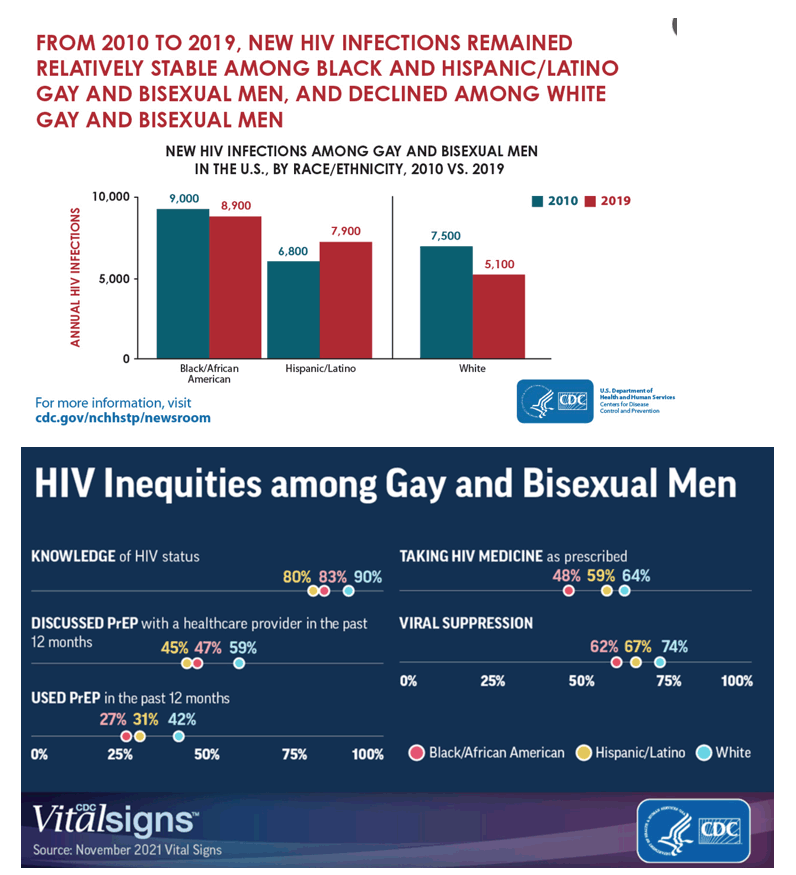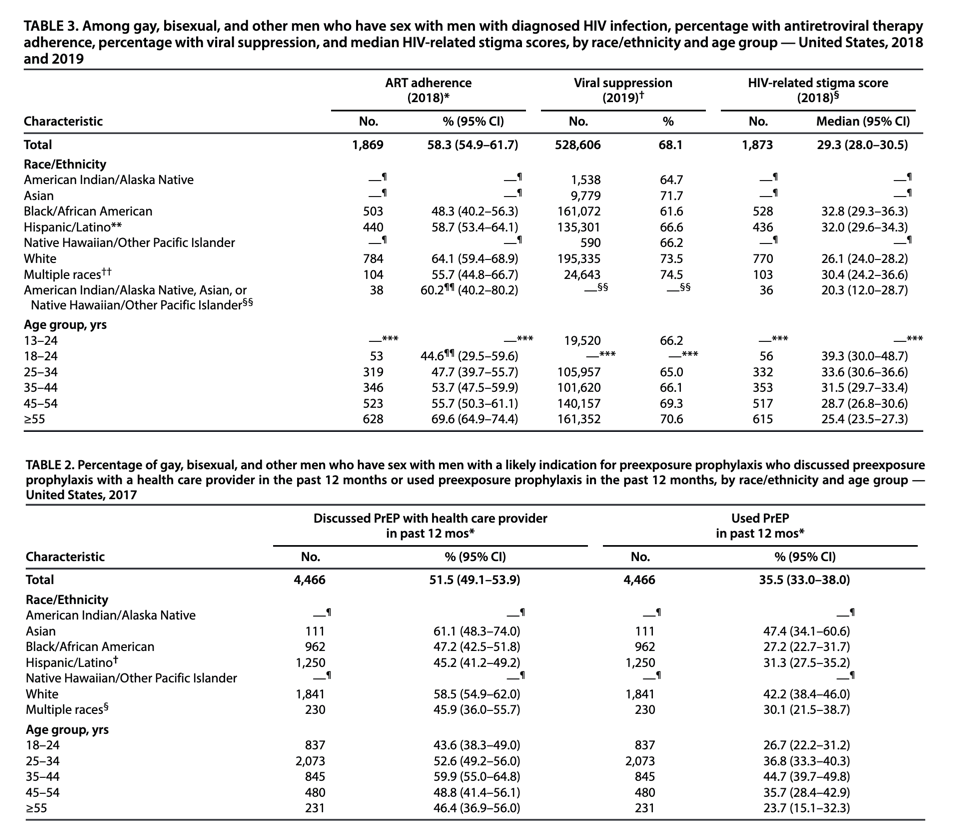| |
New CDC Vital Signs Report Reveals a Decade of Continuing HIV Inequities on Eve of World AIDS Day
|
| |
| |
Download the PDF here
New infections dropped among White gay and bisexual men, but stayed flat among Black and Hispanic/Latino gay and bisexual men
VIRAL SUPPRESSION:
61.6% for Black/African-American, 66.2% for Hispanic/Latino vs 73.5% for Whites.
ART ADHERENCE:
48.3% for Black/African-American, 58.7% for Hispanic/Latino vs 64.1% for Whites.
STIGMA SCORES:
higher for Black/African-Americans: 32.8
whites: 26.1
18-24 age: 39.3; 25-34: 33.6
PrEP USE:
Black/African-American: 27.2%
White: 42.2%
Hispanic/Latino: 31.3%
Abstract
Background: Men who have sex with men (MSM) accounted for two thirds of new HIV infections in the United States in 2019 despite representing approximately 2% of the adult population.
Methods: CDC analyzed surveillance data to determine trends in estimated new HIV infections and to assess measures of undiagnosed infection and HIV prevention and treatment services including HIV testing, preexposure prophylaxis (PrEP) use, antiretroviral therapy (ART) adherence, and viral suppression, as well as HIV-related stigma.
Results:
The estimated number of new HIV infections among MSM was 25,100 in 2010 and 23,100 in 2019. New infections decreased significantly among White MSM but did not decrease among Black or African American (Black) MSM and Hispanic/Latino MSM.
New infections increased among MSM aged 25–34 years.
During 2019, approximately 83% of Black MSM and 80% of Hispanic/Latino MSM compared with 90% of White MSM with HIV had received an HIV diagnosis.
The lowest percentage of diagnosed infection was among MSM aged 13–24 years (55%).
Among MSM with a likely PrEP indication, discussions about PrEP with a provider and PrEP use were lower among Black MSM (47% and 27%, respectively) and Hispanic/Latino MSM (45% and 31%) than among White MSM (59% and 42%).
Among MSM with an HIV diagnosis, adherence to ART and viral suppression were lower among Black MSM (48% and 62%, respectively) and Hispanic/Latino MSM (59% and 67%) compared with White MSM (64% and 74%).
Experiences of HIV-related stigma among those with an HIV diagnosis were higher among Black MSM (median = 33; scale = 0–100) and Hispanic/Latino MSM (32) compared with White MSM (26).
MSM aged 18–24 years had the lowest adherence to ART (45%) and the highest median stigma score (39).
Conclusion: Improving access to and use of HIV services for MSM, especially Black MSM, Hispanic/Latino MSM, and younger MSM, and addressing social determinants of health, such as HIV-related stigma, that contribute to unequal outcomes will be essential to end the HIV epidemic in the United States.


|
|
| |
| |
|
|
|